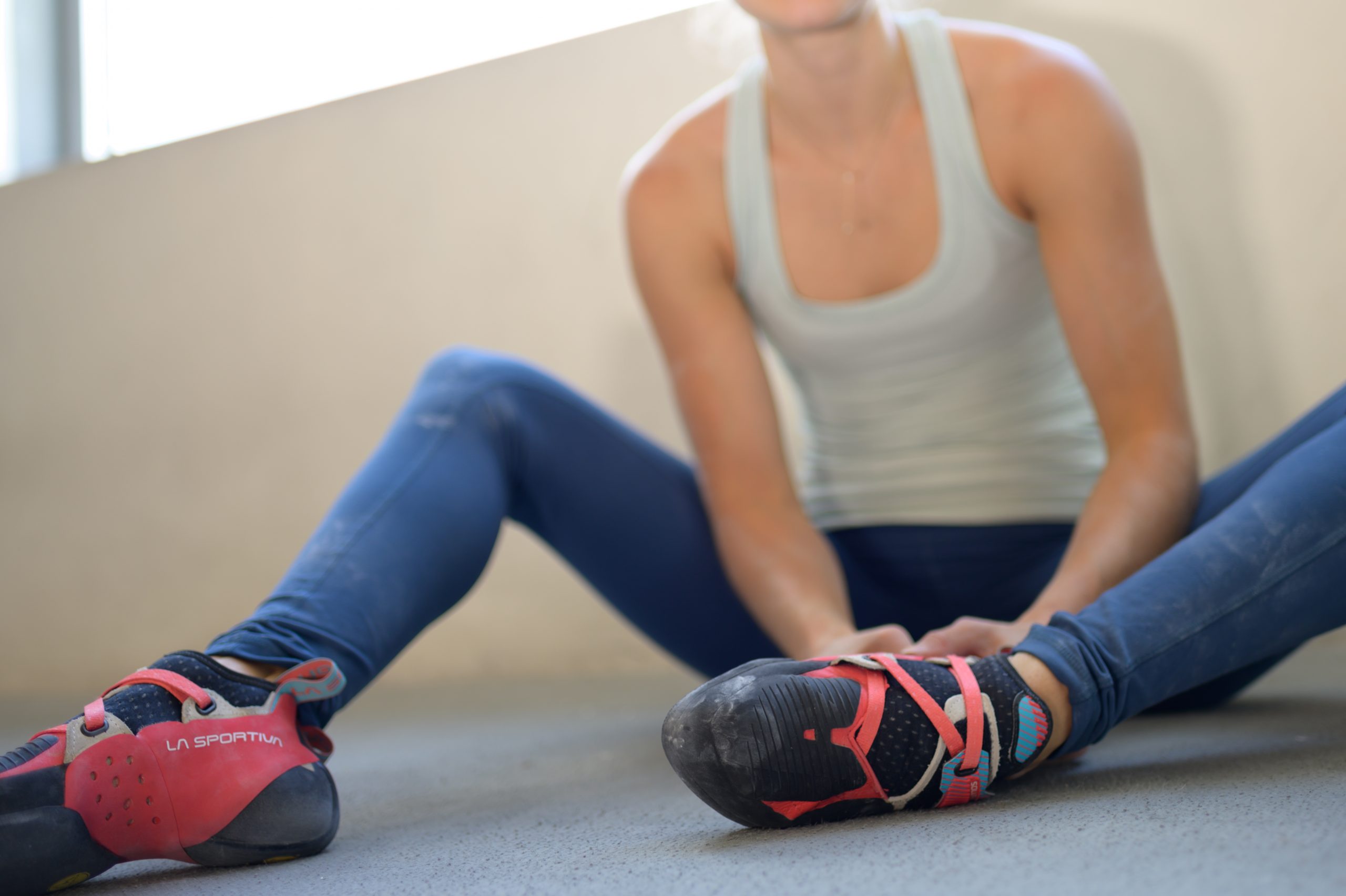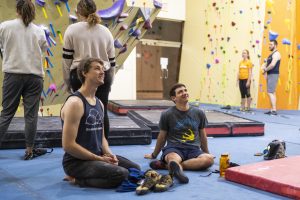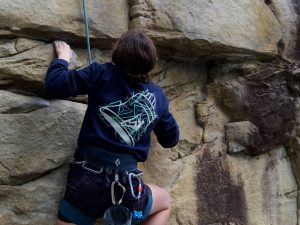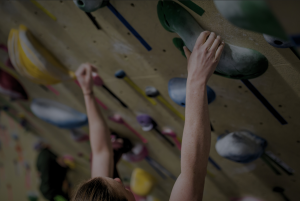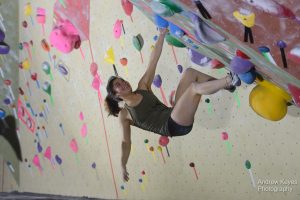Sequencing Feet
The recommended prerequisite for sequencing feet is mastery of doing basic hand sequences. In this earlier article, we mentioned your hand sequence informs your foot sequence.
As we are aiming for cross-body tension whenever possible, the hand we are pulling off of will determine which of our feet we want carrying the weight. Pulling with the left hand, we want the right foot as our motion point, and vice versa for the right hand.
Knowing which of our feet will be the proper motion point drastically reduces the number of options for footholds we must consider.
Foot Sequencing Gets Harder as Climbs Get Harder
As problems become more difficult, it is not always obvious precisely which of the remaining footholds will be best. Or, it may be that a specific sequences of foot movements (walking up the feet) may make a move drastically easier than some other sequence.
In either case, imagining a good foot sequence will increase the odds of a flash, or improve the chances of a red-point. When going for an onsight or flash, there are a few tricks which help.
Remember: Hands Inform the Feet
As a default approach, climbers should aim for feet that preserve cross-body tension. So, if your next move is off the left hand, you should be weighting a right foot.
Know Your Height
While many climbers seem to like high feet because they feel more secure, and less likely to slip off, such feet often take more energy to move onto and off of.
Ideal footholds will get you to your next handhold with an inch or so of reach to spare. Look first for options in that range (knee height or below), rather than high-steps.
Keep Back-Steps Behind the Line
Proper back-steps are off of feet that are in front of the handhold you are using. When sequencing your feet, be careful not to imagine a back-step where the foothold would be behind the line. Anything behind the line would require a drop knee and an oppositional foot.
Plan Your Walks
Often getting to the proper foothold requires intermediate feet. This is a process of walking your feet up to the target hold using intermediate footholds or smears. When sequencing for a onsight, planning the order in which you move your feet can mean the difference between success and failure.
Put it to Memory!
When red-pointing routes, the best advice is remember your sequence. The most common error that climbers make in this respect is to have a solid hand sequence committed to memory, but use different feet for the next attempt. One suggestion for climbers is to remember to look at their feet when climbing, and be deliberate and precise in their placements.
All material is reprinted with the permission of the author. Copyright 2022 David H. Rowland. All rights reserved.


